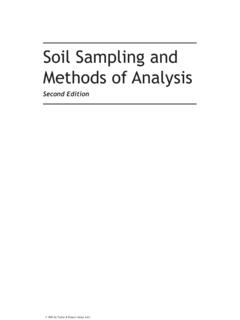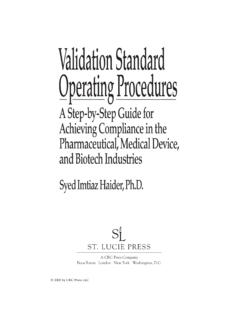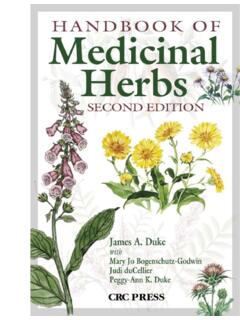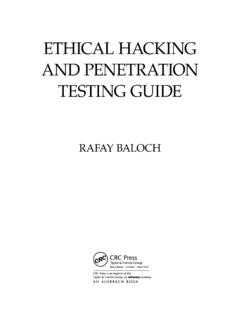Transcription of Fundamental Food Microbiology, Third Edition - UB
1 CRC PRESSBoca Raton London New York Washington, EditionFUNDAMENTALFOODMICROBIOLOGYB ibek RayCover Image:Microscope with easy phase contrast, dark field, and bright light facilities (M 4002 D). (Courtesy of Swift Instrument International, )This book contains information obtained from authentic and highly regarded sources. Reprinted materialis quoted with permission, and sources are indicated. A wide variety of references are listed. Reasonableefforts have been made to publish reliable data and information, but the author and the publisher cannotassume responsibility for the validity of all materials or for the consequences of their this book nor any part may be reproduced or transmitted in any form or by any means, electronicor mechanical, including photocopying, microfilming, and recording, or by any information storage orretrieval system, without prior permission in writing from the consent of crc press LLC does not extend to copying for general distribution, for promotion, forcreating new works, or for resale.
2 Specific permission must be obtained in writing from crc press LLCfor such all inquiries to crc press LLC, 2000 Corporate Blvd., Boca Raton, Florida 33431. Trademark Notice: Product or corporate names may be trademarks or registered trademarks, and areused only for identification and explanation, without intent to the crc press Web site at 2004 by crc press LLC No claim to original Government worksInternational Standard Book Number 0-8493-1610-3 Library of Congress Card Number 2003055738 Library of Congress Cataloging-in-Publication DataRay, BibekFundamental food microbiology / Bibek Ray. --3rd bibliographical references and 0-8493-1610-3 1.
3 Food--Microbiology. I. Edition published in the Taylor & Francis e-Library, 2005. To purchase your own copy of this or any of Taylor & Francis or Routledge scollection of thousands of eBooks please go to ISBN 0-203-99825-1 Master e-book ISBND edicationTo my parents, Hem and Kiron, and my familyPreface to the Third EditionIn the Third Edition , substantial changes have been made in most of the chapters andin their logical arrangement. In addition, one new chapter has been added. Thechapter on microbial stress has been written to include various manifestations ofbacteria under stress and their importance in food microbiology.
4 As before, this bookis written primarily for students taking undergraduate food microbiology , it can be used as a reference in other related courses in many disciplinesas well as by professionals engaged directly and indirectly in food-related areas. Ithank Elizabeth Smith for her excellent typing and editing in the preparation of themanuscript. Finally, I thank my students for their helpful suggestions, especially forthe new materials included in this to the First EditionBetween the time I first studied food microbiology as an undergraduate student andnow, the discipline has undergone a radical change. This change is well expressedby Dr.
5 David Mossel of the Netherlands in his letter published in ASM News (59,493, 1993): from no challenge in plate count and coliform scouting to linkageof molecular biology to food safety (also food bioprocessing and food stability)strategies proclaim a new era in food microbiology. This transition was necessaryto meet the changes that occurred in the food industry, especially in the andother developed countries. The necessary knowledge, techniques, and expertise forthis transition were available. This book reflects this transition from the traditionalapproach to an approach to meet the needs of those who are directly or indirectlyinterested in food food microbiology is a required course for undergraduates majoringin food science.
6 In some form it is also taught in several other programs, such asmicrobiology, public health, nutrition and dietetics, and veterinary science. For themajority of food scientists, except those majoring in food microbiology, this singlecourse forms the basis of the study of microorganisms and their interactions to , for the latter group, food microbiology is probably the only course thatprovides information on the interaction of food and microorganisms. This book waswritten with the major objective of relating interaction of microorganisms and foodin relation to food bioprocessing, food spoilage, and foodborne diseases.
7 Thus, itwill be useful as a text in the introductory food microbiology courses taught undervarious programs and disciplines. In addition, it will be a valuable reference forthose directly and indirectly involved in food and microbiology, including individualsin academic institutions; research institutions; federal, state, and local governmentagencies; food industries; food consultants; and even food subject matter is divided into seven sections. For undergraduate teaching,the first six sections can be taught as a semester course; Section VII (Appendices)can be used as advanced information for an undergraduate course which containsmaterials that are either taught in other courses, such as advanced food Microbiology, or food safety courses and laboratory courses.
8 Section I describes the history of foodmicrobiology, characteristics of microorganisms important in foods, their sources,and significance. Section II deals with microbial growth and metabolism of food,and the significance of microbial sublethal injury and bacterial sporulation in III explains the different beneficial uses of microorganisms, which includestarter cultures, bioprocessing, biopreservation, and probiotics. Section IV deals withspoilage of foods by microorganisms and their enzymes and methods used to deter-mine food spoilage. In addition, there is a chapter on problems and solutions ofsome emerging spoilage bacteria in refrigerated foods.
9 Section V deals with food-borne pathogens associated with intoxication, infections, and toxicoinfections andthose considered to be opportunistic pathogens, as well as pathogenic parasites andalgae. In addition, a chapter has been included on emerging pathogens and a chapteron indicators of pathogens. Section VI discusses different methods used to controlundesirable microorganisms for the safety and stability of food. A chapter on newnonthermal methods and a chapter on the hurdle concept in food preservation materials in each chapter are arranged in logical, systematic, and concisesequences. Tables, figures, and data have been used only when they are necessaryfor better understanding.
10 At the end of each chapter, a limited list of selectedreferences and suggested questions have been included. To reduce confusion, espe-cially for those not familiar with the constant changes in microbial genera, threefirst letters have been used to identify the genus of a species. The index has beenprepared carefully so that the materials in the text can be easily thank Mrs. Deb Rogers for her excellent performance in typing the , I thank my students, who, over a period of the last 20 years, have suggestedwhat they would like to have in a food microbiology course. Their suggestions havebeen followed while writing this to the Second EditionIt is gratifying to find that crc press showed interest in a second Edition within 3years of the initial publication of Fundamental Food Microbiology.

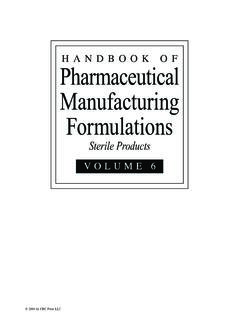
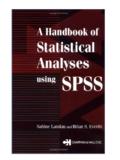
![Downloaded by [University of Toronto] at 16:20 23 May 2014 ...](/cache/preview/9/0/c/3/5/7/1/e/thumb-90c3571e5c0834844e82dee36d59b967.jpg)
